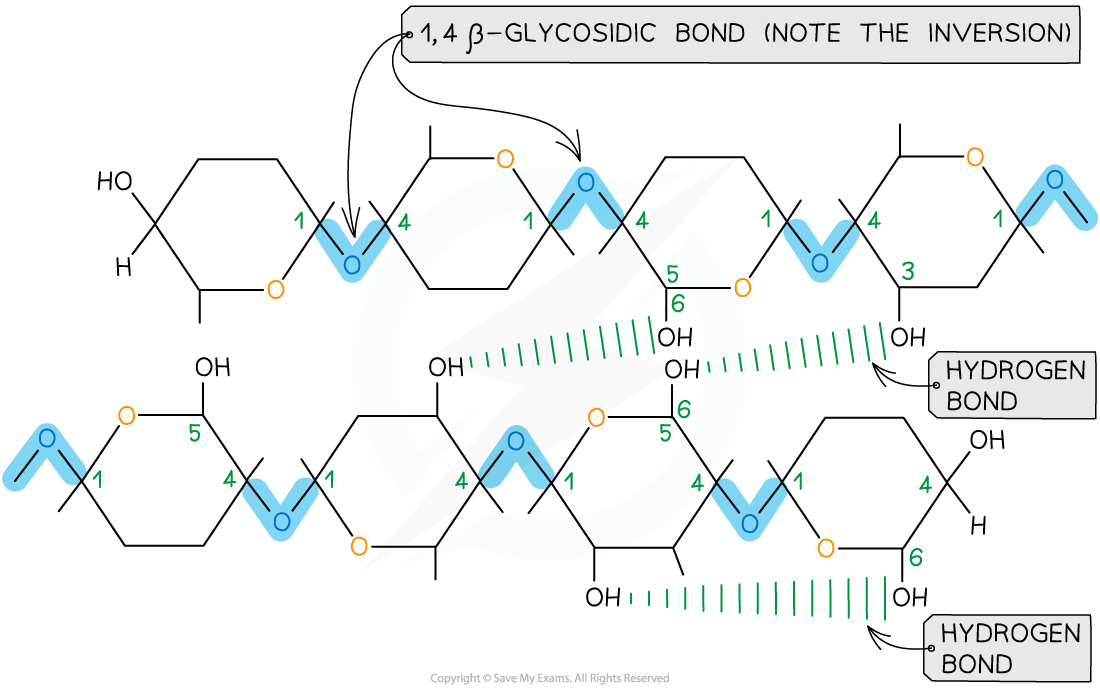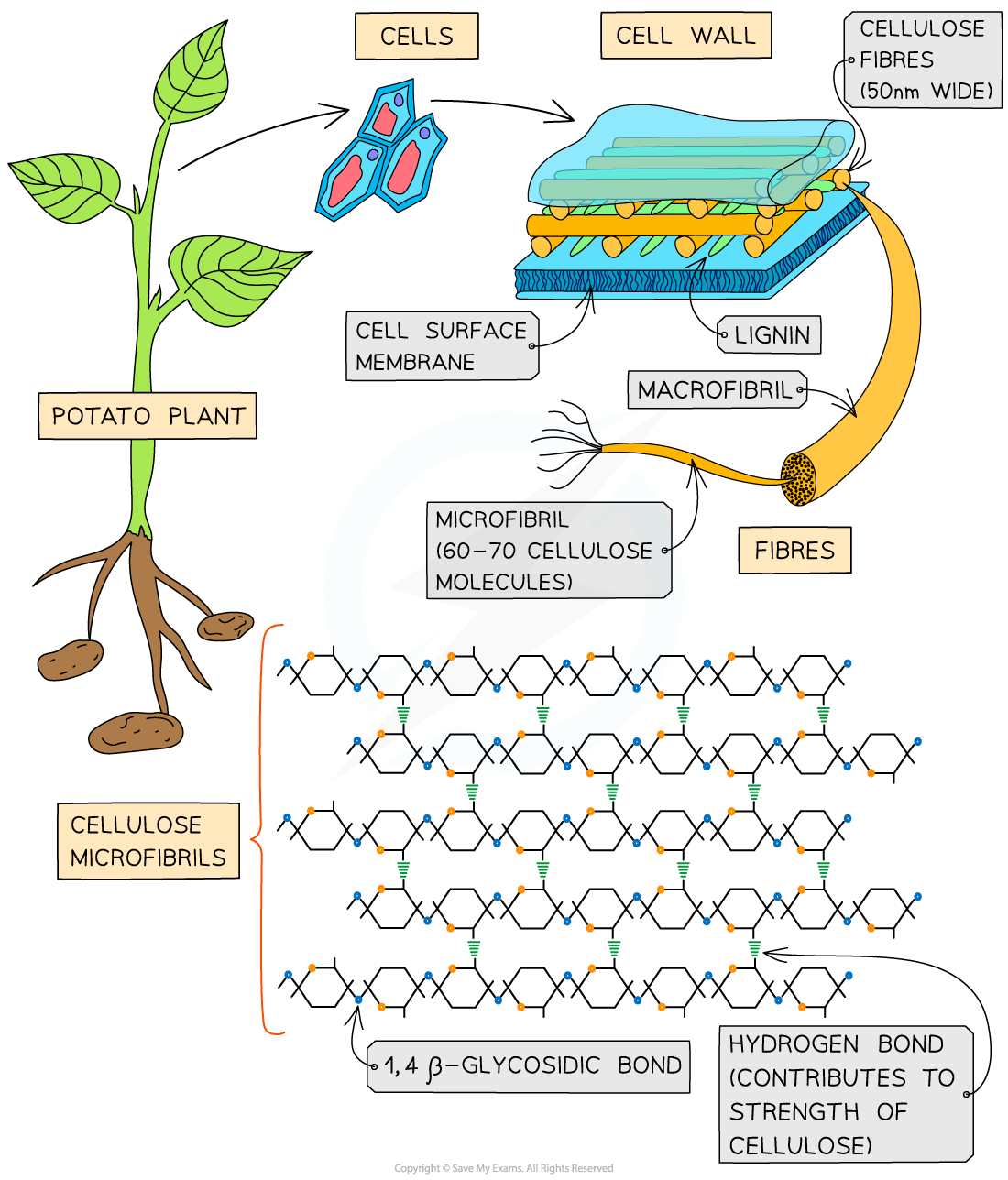Cellulose (Cambridge (CIE) A Level Biology): Revision Note
Exam code: 9700
Cellulose: structure & function
Cellulose is an unbranched polysaccharide
Polysaccharides are macromolecules that are polymers formed by many monosaccharides joined by glycosidic bonds in a condensation reaction to form chains
These chains may be:
Branched or unbranched
Folded (making the molecule compact which is ideal for storage, e.g. starch and glycogen)
Straight (making the molecules suitable to construct cellular structures, e.g. cellulose) or coiled
Polysaccharides are insoluble in water
Cellulose structure
Is a polymer consisting of long chains of β-glucose joined together by 1,4 glycosidic bonds
As β-glucose is an isomer of α-glucose to form the 1,4 glycosidic bonds consecutive β-glucose molecules must be rotated 180° to each other

Due to the inversion of the β-glucose molecules many hydrogen bonds form between the long chains giving cellulose it’s strength

Cellulose function
Cellulose is the main structural component of cell walls due to its strength which is a result of the many hydrogen bonds found between the parallel chains of microfibrils
The high tensile strength of cellulose allows it to be stretched without breaking which makes it possible for cell walls to withstand turgor pressure
The cellulose fibres and other molecules (e.g. lignin) found in the cell wall form a matrix which increases the strength of the cell walls
The strengthened cell walls provides support to the plant
Cellulose fibres are freely permeable which allows water and solutes to leave or reach the cell surface membrane
As few organisms have the enzyme (cellulase) to hydrolyse cellulose, it is a source of fibre

Examiner Tips and Tricks
Learn the monomer for cellulose, the arrangement of the glycosidic bond (which is dependent on the position of the OH group on carbon 1 and 4) and that cellulose exists in parallel chains bonded by many hydrogen bonds giving it high mechanical strength.

Unlock more, it's free!
Did this page help you?